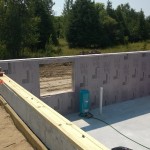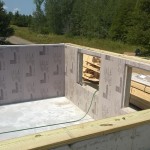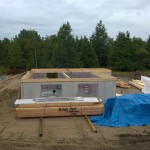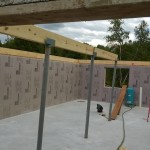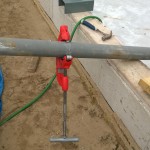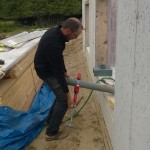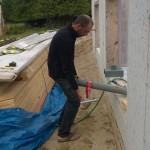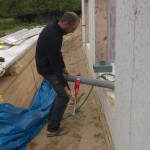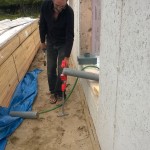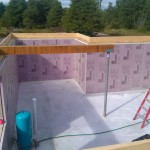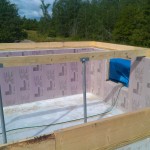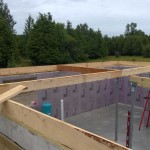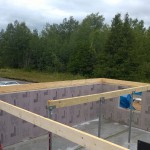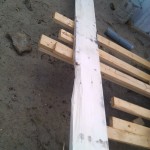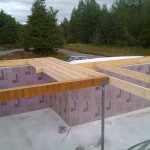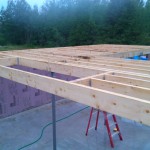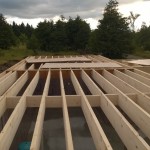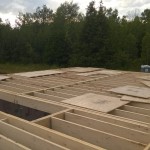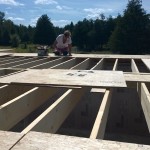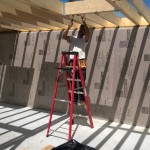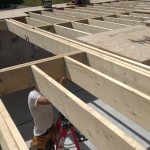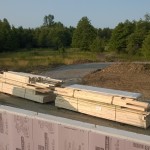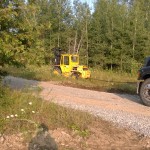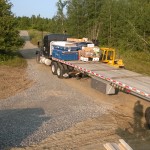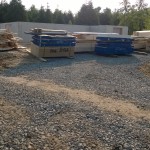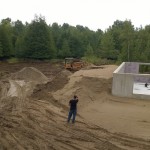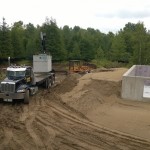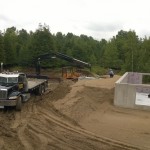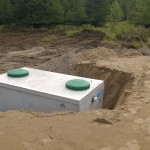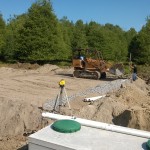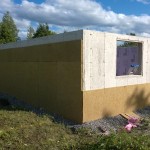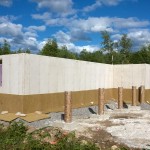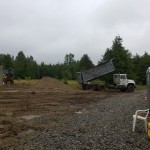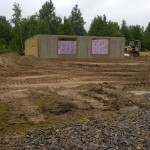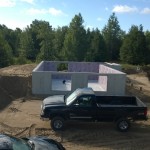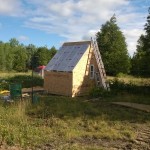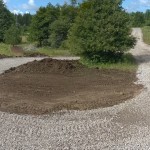This past week has been extremely productive and busy, and also full of bouts of rain. Since I have been so busy building the house I haven’t had time to write any posts, so I’ve decided the best way to handle this is to do one post a week with the progress we’ve made that week. There may be posts more often, but I don’t think I can commit to that 🙂
We started out by first removing the placeholder blocks in the basement floor slab, in preparation to drop the support columns into place. This actually took a bit of doing as the wood posts had swelled up from the rain / soaking up water, so we had to use a pair of jacks (one on each side of the post) to gently jack them out a bit at a time without splintering the wood.
We then put down the sill gasket, the sills, the rim joists, and then cut the lally columns to size and dropped them into the holes, and put the main floor support headers in place on top of those support columns. From there we were able to install all the floor joists, and then start laying down the subfloor. My mother has been over to assist me several times in the past week and it’s a huge help to have another pair of hands on the job. Sure makes things go a lot faster!
While all this was going on, our septic system was inspected and approved by the health unit and will get covered up as soon as the ground dries out a little bit – then we can connect it to our house at our leisure. We also relocated our cellular signal booster and can more reliably get a signal here in the RV so hopefully I will get to be online a bit more often. Lastly, all our Xantrex solar equipment showed up so we are getting ready to go on that front as soon as the batteries and solar panels get to the warehouse up in Kemptville.
Please enjoy the pictures, thanks for reading, and if anyone wants to help out we welcome any and all hands – you don’t need any experience just show up and there’ll be something to do!
